This event was developed by Parque Explora, LSE Cities (and its project Configuring Light) with support from ARUP, to discuss the different aspects of analysis when talking about urban lighting, the night and even light pollution. If you missed it, you can watch the recorded version here. In daily life and in cities, night and darkness have good elements that we need to start appreciating. The night has positive aspects. How do we preserve the right to dark skies while we light our cities? To discuss these topics, the event brought together:
- Don Slater, London School of Economics,
- Leni Schwendinger, ARUP
- León Jaime Restrepo, GTTP Program Colombia
- Pedro Pérez, Iluminación Pública de EPM
- Carlosfelipe Pardo, Despacio (moderator)
Don Slater (Professor at the London School of Economics)
Configuring the Urban Night:
He emphasized that light must be viewed from a sociological perspective. We must think about what light means as a prelude or framework for interpersonal interaction where social spaces are configured. Social perspective: how and in what spaces people interact with light.
Light is a material in which many people work. It is the atmosphere and the risk of cities. Most light is not planned (turning lights on and off, creating light with cars and all these activities, for example).
There are three key topics in which light can be reconfigured in our urban life:
1. Cities have a great diversity of people with different needs. Using these needs as a base, we can determine how and what to illuminate in the city. It is necessary to know how people want to use light. Teens prefer opposite things from adult couples (need for light, shades, uses, patterns). It is important to discover personal uses of light, life stories and what happens on the way to work, in order to face the city and the night, among other situations.
2. Light as a process, a derivative: light is more than this. It is a social process. People don’t talk much about light. Currently a project is being developed in the small community of Darby, UK. Typically people want as much light as possible to be safe. What Darby did was to redistribute the light in a way that made it feel like a space that allowed different types of movement with a warm and welcoming atmosphere.
3. LED revolution: light can be much more interactive and respond to social life more flexibly, it can be programmed and be linked with with another revolution: social data (GIS). Light is changing as people’s lives are changing. Light is social.
Planning urban lighting: It is an opportunity to create environments out of darkness. Darkness serves for inspiration, work, creative endeavors and travel.
Her inspiration is a phrase from the writer Edgar Allan Poe which alludes to a walk together in the street, seeing what contemplation might bring.
Lighting strategies are based in communities. Architects, urban designers and everyone else who works in lighting should work hand-in-hand in support of economic vitality, public health and safety (feeling good living in the city). Examples of their temporary projects: the river street (light sculpture); a parking lot that, by night, filled with light games; projects of people in the street creating “theaters of light” in urban spaces, bus ramps in Manhattan with creative light reflections.
She also worked on projects like asking if there is too much light and creating a workshop out of this. During the workshop, many people said they liked lanterns. They therefore created a temporary festival of lanterns, first of paper and then more modern ones. The stores along the street were lit with small lanterns so that people could walk by and see them. Finally, for the street intersection, they developed another idea: a giant flat lantern.
It is key to bring together proposals to respond to nocturnal life as it is and how we want it to be in the future.
León J. Restrepo. Coordinator, Galileo Teacher Trainning Program.
“Too much light prevents us from seeing the stars.” The International Astronomical Union raised awareness about a dark sky. The possibility of looking at the sky has great relevance for the human culture. Astronomy is at the base of human culture and if we are not cognizant of our place in the universe, we will not be conscious of the magnitude of what we face as a species.
Lighting is a necessity for many reasons. However light is also damaging the night. The dark sky is a right of humankind (UNESCO); the Conference of Rio ratified it as such. There is a right to a clean sky; thus we must light the ground, not the sky. There is legislation regarding this and it is very important to understand the topics of light intrusion, diffusion into the sky, glare, and contrast.
Air quality is compromised by inadequate lighting as well. Animal species are also affected (birds for example). Life cycles are affected, as are circadian rhythms. The issue therefore is to illuminate well. We need to coexist with light, not fight against it.
Pedro Pérez. Public Lighting, Empresas Públicas de Medellín (EPM):
Lighting policies include the development of lighting master plans. Due to regulations, there are certain parameters that must be met. It must establish a nocturnal identity through light, revitalizing public spaces. The Lighting Master Plan was therefore created.
The plan consists of 4 documents:
– Land-use plan
– Municipal development plan
– Technical regulations of lighting
– Network of lit cities: Medellin has committed compliance with the parameters of this international network to which it belongs.
It has taken into account the importance of social inclusion (satisfaction of human needs), environmental-sustainability concerns, technical and safety issues (the guarantee of a comfortable city) and spatial considerations.
Each neighborhood has different lighting needs: the Lighting Master Plan therefore identified those places and activities. The first project consisted of discovering dark public spaces in low-income neighborhoods and, adapting one of them to transform it into a space of social interaction (now lit). Finally, they developed a manual for future projects.
General Conclusions
– The fear of darkness or shadows: lighting is an educational process; we must find ways of lighting that make us feel safer, that allow to find peace in our neighborhoods. Slowly we have to change the paradigm and create spaces where people feel good in darkness. The fear is not of darkness itself.
– Medellin: image of a city of light: It is important to know how to illuminate well. Medellin is a well-lit city. It creates more subtle areas, finds a balance in the way of lighting, uses more colors, allowing the light to take us and direct us to a type of unknown treasure. Medellin is a good starting point; it is the beginning of a debate about light.
– Technology has a very important role. It can be used in favor of sectors that really want or need illumination. Technology is a part of wider social processes. Technology as a methodology…
– Lighting what we want to, in the right direction. Illumination is different from lighting. The eye is too blinded by car lights; if their intensity were reduced, city lights could be dimmed as well.
– Private and public light: It would be ideal to complement them to create synergies.
– Circadian cycle: the lack of complete darkness can affect the segregation of hormones for human well-being. These changes can cause breast cancer in women.
– Light is crucial for forms of social interactions and practices. It is an infrastructure for human relations. A large influx of people makes a city safer. It is important to be out on the street.
– EPM Lighting Master Plan: The first city in Colombia to do this. The webpage receives proposals and commentaries for contributing to the Master Plan: www.epm.com
– Winning submissions from the public: Public space; we are the owners of our own lighting. Proposed activity: each owner proposes how they want architects or engineers to design light in their private space.



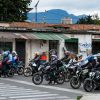
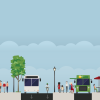
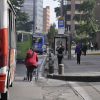
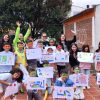
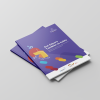

Comentarios recientes